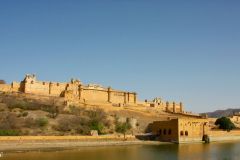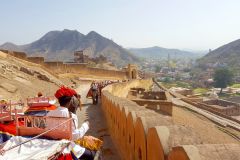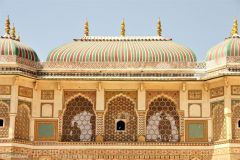The hill forts of Rajasthan are preserved manifestations of the immense powers held by the maharajahs of the Rajput kingdoms from the 8th to the 18th centuries.
The UNESCO World Heritage List includes more than a thousand properties with outstanding universal value. They are all part of the world’s cultural and natural heritage.
Official facts
- Country: India
- Date of Inscription: 2013
- Category: Cultural site
UNESCO’s World Heritage Centre’s short description of site no. 247:
The serial site, situated in the state of Rajastahan, includes six majestic forts in Chittorgarh; Kumbhalgarh; Sawai Madhopur; Jhalawar; Jaipur, and Jaisalmer. The ecclectic architecture of the forts, some up to 20 kilometres in circumference, bears testimony to the power of the Rajput princely states that flourished in the region from the 8th to the 18th centuries. Enclosed within defensive walls are major urban centres, palaces, trading centres and other buildings including temples that often predate the fortifications within which developed an elaborate courtly culture that supported learning, music and the arts. Some of the urban centres enclosed in the fortifications have survived, as have many of the site’s temples and other sacred buildings. The forts use the natural defenses offered by the landscape: hills, deserts, rivers, and dense forests. They also feature extensive water harvesting structures, largely still in use today.
(…) Amber Palace is representative of a key phase (17th century) in the development of a common Rajput-Mughal court style, embodied in the buildings and gardens added to Amber by Mirza Raja Jai Singh I.
My visit
Of the six hill forts of Rajasthan I had the fortune of visiting the Amer Fort (or Amber) near Jaipur. I was on a tour of India’s famous Golden Triangle route (2017). There are fortifications on all the neighbouring hills around the combined fort and palace in the middle. Its location is carefully chosen on top of one of the hills, overlooking the valley and the Maotha Lake.
Most visitors ride up to the palace on elephants thus enjoying an entrance to the large courtyard worthy of a king from days gone by. The largest courtyard is a mere introduction to the much more elaborate courtyards inside the palace proper. This is one of India’s most prominent attractions. It was built in the late 16th century with improvements over the next 150 years or so.


























